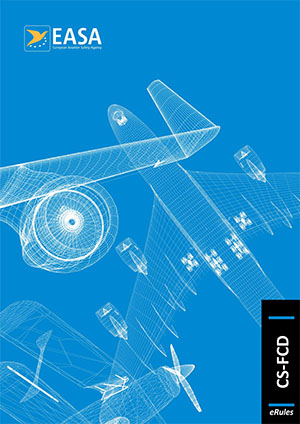CS FCD.200 Determination of a pilot type rating
ED Decision 2021/012/R
(a) The determination of whether a certain type of aircraft is subject to a pilot type rating is as follows:
(1) The following aircraft are subject to a pilot type rating:
(i) aeroplanes:
— with a maximum certified take-off mass (MCTOM) exceeding 5 700 kg, or
— certified for a maximum passenger seating configuration of more than 19, or
— certified for operation with a minimum crew of at least two pilots, or
— equipped with one or more turbojet engines or more than one turboprop engine;
(ii) helicopters except those certified in accordance with CS-VLR;
(iii) tilt rotors; and
(iv) gas airships;
(2) The following aircraft are not subject to a pilot type rating:
(i) sailplanes;
(ii) powered sailplanes;
(iii) balloons;
(iv) aeroplanes that meet the definition of ELA 1 or ELA 2; and
(v) hot air airships.
(3) An aircraft not listed in subparagraphs (1) or (2) will be subject to a pilot type rating:
(i) either at the request of the applicant; or
(ii) if EASA determines that the aircraft's operational experience, data, handling qualities, performance or level of flight deck technology require type rating training for its safe operation.
(b) The determination of whether a certain aircraft is a new type or a variant is made in accordance with Subpart D.
(c) The type rating or variant determination is recorded in the OSD FC.
(d) Changes to a type design are assessed for their impact on the associated FC data and addressed, if necessary, through changes to the OSD FC.
[Issue No: FCD/2]
GM1 FCD.200 Determination of a pilot type rating and a variant
ED Decision 2021/012/R
For aircraft described in CS FCD.200(a)(3)(a)(3), it may be determined during the type certification process or based on in-service experience, that the aircraft type requires a pilot type rating for safe operations. The TC applicant/holder is then requested to obtain approval of a minimum syllabus for pilot type rating training by including the OSD FC specifications in the certification basis. This determination is based on the considerations listed in that subparagraph.
With reference to CS FCD.200(d), when assessing design changes for their impact on the FCD, a new model or a new series, as identified in the TC data sheet, would usually determine a variant or, potentially, a new type.
Modifications that are significant from the FC perspective, performed by the TC holder or via an STC, even though they do not determine a new model or a new series, may require the determination of a new variant (e.g. the installation of a new avionic suite).
Design modifications to an existing type or variant that do not determine a new variant are only addressed through changes to the DR tables or supplemental DR tables to support operators in developing their training programmes.
[Issue No: FCD/2]
